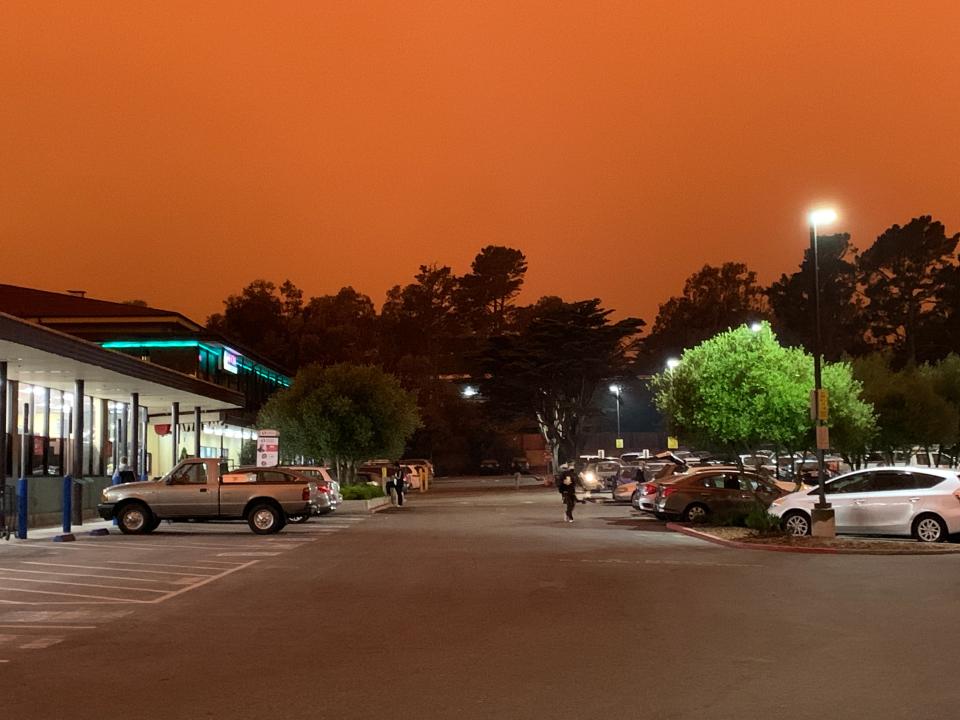As heat wave brings 'critical risks' of wildfires, California contends with two new blazes
SAN FRANCISCO — California residents, who recently caught a breather from the unhealthy air quality produced by a spate of wildfires this month, are now holding their breath hoping those conditions don’t return.
The National Weather Service has issued a red flag warning for nearly all of Northern California as a heat wave hitting the Western states combines with gusty, dry winds to heighten the risk of wildfires in a region already pummeled by the rash of blazes.
A pair of new fires broke out Sunday, including the fast-moving Zogg Fire that had burned through 7,000 acres in less than five hours near Redding in Northern California, according to Cal Fire.
The Glass Fire, which sparked early in the day in Napa Valley wine country north of San Francisco, had consumed more than 2,500 acres by evening.
Glass Fire: Never wait til the last second to evacuate. This video is from Deputy Matt Macomber, one of several deputies currently evacuating parts of Napa County. pic.twitter.com/YQXFirJ0aV
— Napa County Sheriff's Office (@NapaSheriff) September 27, 2020
The weather service said both Northern and Southern California would be exposed to “critical risks for fire weather’’ on Sunday and Monday, but AccuWeather meteorologist Brett Rossio said that, because of stronger winds, the former is in the most danger.
The state’s biggest utility, PG&E, said it planned to cut off power to 89,000 customers through Monday morning, mostly in the Northern and Central Sierra but also extending to parts of the San Francisco Bay Area, as a preventive measure to avoid igniting fires. The number of affected customers was later reduced to 65,000.
Timelapse video: Zogg Fire burns near Redding, California
Northern California is also the location of the enormous August Complex Fire, which continues to burn about 130 miles north of San Francisco. The largest wildfire in state history has charred more than 873,000 acres and was a major contributor to the dangerous air quality state residents were exposed to for days about three weeks ago and the apocalyptic skies over the Bay Area on Sept. 9.
Rossio said conditions this week won’t reach that level, but air quality “likely will be very poor, especially given this offshore flow. It will probably make things pretty bad for Sacramento, San Francisco.’’

Neither the August Complex nor the Creek Fire, which has incinerated more than 302,000 acres of a forest 60 miles northeast of Fresno, is yet 50% contained. So they continue to spew smoke and foul up the air in their surroundings and, depending on the wind, even hundreds of miles away.
People with respiratory ailments are especially susceptible to that harmful air, said John Watson, a research professor of air quality science at the Desert Research Institute in Reno, Nevada.
Widespread: Aerial footage shows smoke and flames from wildfire rise into night sky in California
“The adverse health effects from the polluted days are typically short-lived unless they aggravate an already underlying condition such as asthma or COPD (chronic obstructive pulmonary disease),’’ said Watson, who advised checking the air quality index, minimizing outdoors activities in poor conditions and using air-conditioning units in the recirculate setting to filter the indoor air.
Air-conditioners and fans figure to get a workout this week in California, where cities including Los Angeles, Sacramento, Fresno and San Jose are expected to reach or approach triple-digit temperatures.
The heat doesn’t by itself set off fires, but with forest vegetation increasingly dry after months without rain, all it takes is a spark.
“When you increase the temperature, you’re also decreasing the dew point and thereby decreasing the relative humidity,’’ Rossio said. “Basically, you’re creating a tinderbox.’’
This article originally appeared on USA TODAY: 'Critical risks' of wildfires in California amid heat wave


